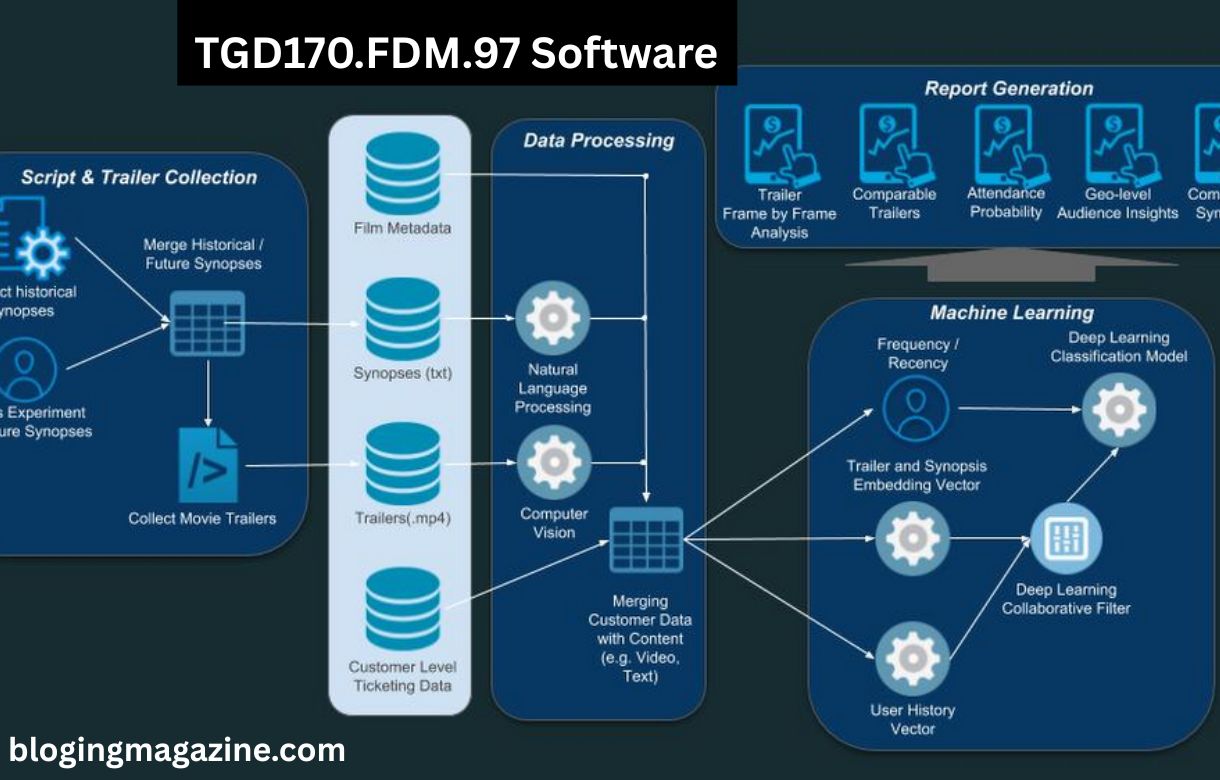Table of Contents
ToggleWhat is TGD170.FDM.97 Software?
TGD170.FDM.97 software is an advanced digital solution engineered for high-performance data management, diagnostics, and system integration. Developed with precision for technical and industrial applications, this software package is rapidly gaining popularity across various sectors, including automotive diagnostics, factory automation, and technical fleet monitoring. It combines intelligent firmware control, data flow optimization, and remote diagnostics in a single, cohesive platform.
Key Features of TGD170.FDM.97 Software
1. Robust Diagnostic Capabilities
At the core of TGD170.FDM.97 is its multi-tiered diagnostic framework, capable of performing real-time evaluations across systems. The software supports:
- Sensor-level diagnostics
- ECU data analysis
- Predictive maintenance algorithms
This allows for proactive monitoring, significantly reducing equipment downtime and preventing catastrophic failures before they occur.
2. Seamless Integration with Legacy Systems
Many industrial environments operate on legacy hardware. TGD170.FDM.97 stands out by offering backward compatibility without compromising performance. It supports:
- CAN bus interfaces
- Modbus protocols
- Ethernet/IP and OPC UA communication
This means businesses can upgrade their monitoring software without overhauling their entire hardware setup.
3. Enhanced User Interface and Dashboard Control
A streamlined graphical user interface (GUI) brings operational clarity to users of all technical levels. Features include:
- Drag-and-drop dashboard design
- Real-time graphs and analytics
- Custom alert triggers and event logging
This level of customization ensures that every user gets a bespoke diagnostic experience, tailored to their workflow and technical requirements.
Performance Benefits of TGD170.FDM.97
1. Real-Time Data Acquisition and Processing
The TGD170.FDM.97 software is optimized for low-latency data communication, meaning engineers can view, analyze, and act upon information as it happens. It features:
- High-frequency data polling
- Bufferless transmission techniques
- Edge computing integration for faster results
This empowers teams to make split-second decisions with maximum confidence.
2. Multi-Platform Compatibility
Whether you’re running on Windows, Linux, or embedded OS environments, TGD170.FDM.97 ensures cross-platform functionality. Its lightweight architecture allows it to be deployed on:
- Embedded devices
- Industrial control units
- Cloud-based remote servers
This versatility is key in today’s hybrid industrial infrastructure, offering unparalleled flexibility and scalability.
3. Cybersecurity-First Design
In an age of digital threats, security cannot be compromised. TGD170.FDM.97 includes:
- Encrypted data transmission (AES-256)
- Role-based access controls
- Tamper detection systems
Its compliance with ISO/IEC 27001 ensures peace of mind for companies working in data-sensitive environments.
Applications and Industry Use-Cases
1. Automotive Diagnostics
In the automotive industry, TGD170.FDM.97 plays a vital role in real-time engine performance tracking, OBD-II system diagnostics, and fleet management telemetry. Manufacturers and service centers benefit from:
- Instant fault code analysis
- Fuel efficiency tracking
- Advanced emissions monitoring
2. Smart Manufacturing & Industry 4.0
In modern manufacturing environments, this software drives efficiency by integrating with PLC controllers, SCADA systems, and IIoT sensors. Key use-cases include:
- Condition-based maintenance
- Production line monitoring
- Automated quality control
3. Utilities and Infrastructure Monitoring
Utilities companies use TGD170.FDM.97 to manage energy distribution, water treatment, and waste management systems. It enables:
- Load balancing
- Remote diagnostics of transformer stations
- Environmental compliance tracking
Technical Specifications at a Glance
- Supported Protocols: CAN, LIN, Modbus, OPC UA, MQTT
- Data Transfer Rate: Up to 1 Gbps over Ethernet
- Cloud Compatibility: AWS, Azure, Private Cloud Support
- Minimum System Requirements:
- CPU: Quad-core 2.0GHz
- RAM: 4GB
- Disk Space: 500MB
- CPU: Quad-core 2.0GHz
- Licensing Options: Perpetual, Subscription, Enterprise Site License
Why TGD170.FDM.97 Outperforms Competitors
While many diagnostic tools offer similar core functions, TGD170.FDM.97 excels through:
- Ease of customization
- Superior UI/UX experience
- Faster update cycles and developer support
- Comprehensive documentation and API access
These qualities make it a standout tool for businesses seeking digital transformation in diagnostics and control.
User Feedback and Industry Recognition
Many early adopters have reported productivity boosts of 25% or more after implementing TGD170.FDM.97. It has received accolades for:
- Intuitive configuration processes
- Detailed logs that simplify audits
- Scalability across multiple industrial units
Testimonials highlight its role in driving innovation, particularly for smart systems integration.
Conclusion: Is TGD170.FDM.97 Worth It?
Absolutely. For companies seeking cutting-edge diagnostic software with future-ready architecture, TGD170.FDM.97 provides a powerful, secure, and adaptable solution. Its versatility, deep system integration, and user-first design make it the optimal choice for both legacy and modern systems alike.
FAQ’s
1. What is TGD170.FDM.97 software used for?
TGD170.FDM.97 is primarily used for real-time diagnostics, data acquisition, and system integration in industrial, automotive, and infrastructure environments. It helps monitor and analyze equipment performance, detect faults, and streamline operations through its intelligent interface.
2. Is TGD170.FDM.97 compatible with older hardware systems?
Yes, the software is designed to work with legacy systems using standard protocols like CAN, Modbus, and Ethernet/IP, making it highly versatile for environments that use older yet functional hardware setups.
3. Can I use TGD170.FDM.97 across multiple platforms?
Absolutely. It supports Windows, Linux, and even embedded systems, allowing seamless operation on various devices, including industrial control units and cloud platforms.
4. How secure is TGD170.FDM.97?
The software employs advanced encryption (AES-256), role-based access, and tamper detection mechanisms to ensure data integrity and protection. It aligns with ISO/IEC 27001 standards for robust cybersecurity.
5. What industries benefit the most from using TGD170.FDM.97?
Industries such as automotive diagnostics, smart manufacturing, energy management, and infrastructure utilities benefit significantly from this software due to its advanced diagnostic tools, real-time monitoring, and high scalability.
You may also explore: Wunonovzizpimtiz Digital Marketing Tactics That Work in 2025 – Top 21 Strategies for Explosive Growth





